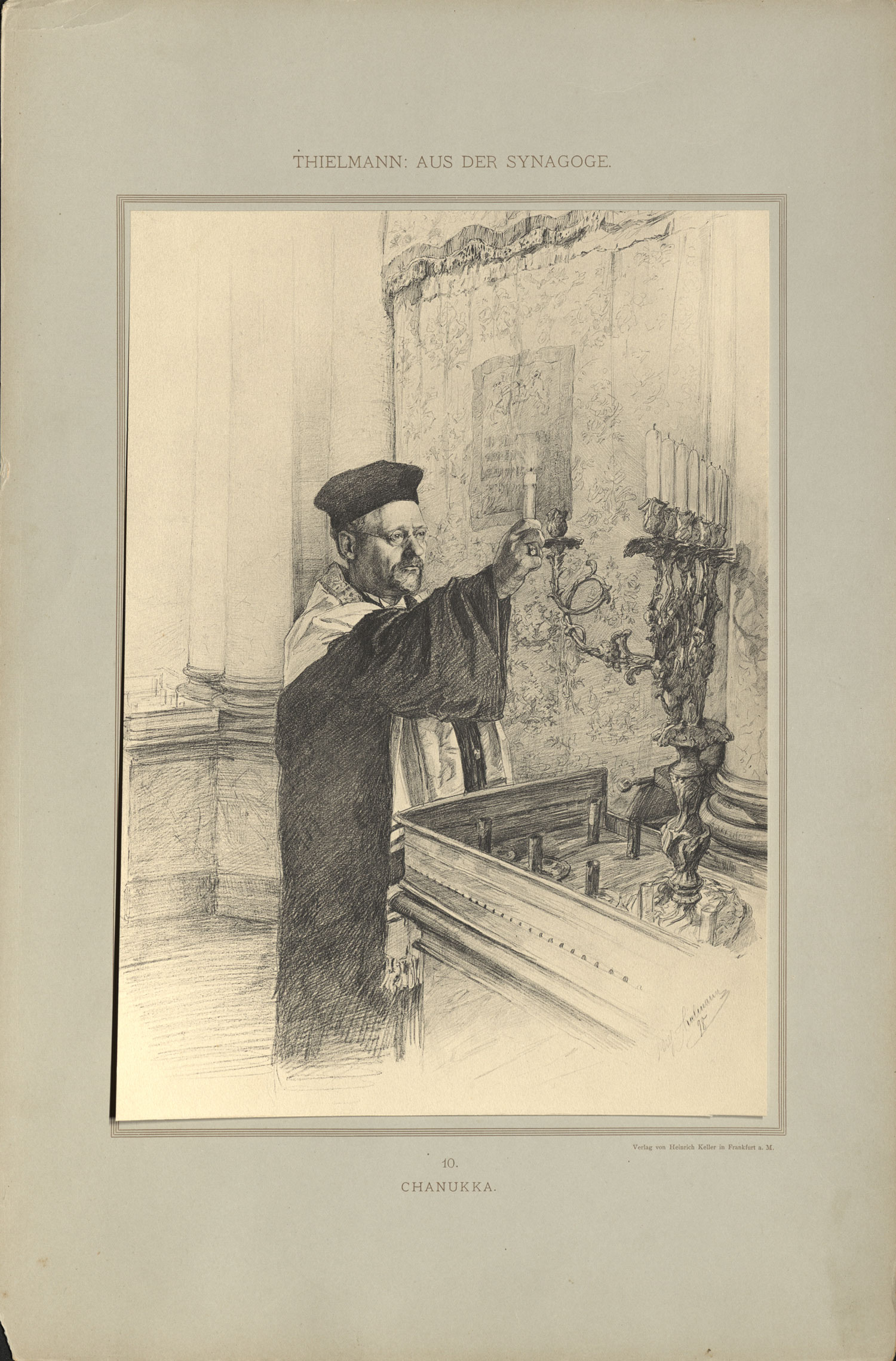Like many depictions of Jewish holidays, this Hanukkah scene was created by a non-Jewish artist. German painter and illustrator Wilhelm Thielmann (1868–1924) was commissioned by the Jewish community of Kassel to document scenes from the life of its synagogue in order to preserve these moments for future generations. Thielmann spent time sketching at the synagogue over the course of three years (1896-1899), observing the Sabbath and holiday rituals, and produced the series of pencil drawings published as lithographs in the portfolio Aus der Synagoge. Hebraist and Jewish studies scholar Abraham Sulzbach wrote the introduction to Thielmann’s work, noting that the drawings were in the same vein as the paintings of Moritz Daniel Oppenheim, which were widely reproduced during this time. Sulzbach makes a crucial distinction, however, between Oppenheim’s “Scenes of Jewish Family Life” and Thielmann’s scenes in the synagogue: while Oppenheim depicted a way of life that had already receded into the past, Thielmann shows the viewer scenes of the present time. The people and customs he depicts would have been familiar to German Jews at the turn of the last century, and they provided a faithful representation of Jewish religion and practice to those not familiar with it.
In Germany, it was customary for synagogues to display large Hanukkah menorahs, which would be lit with great ceremony. Lighting the menorah commemorates the rededication of the Temple after the victorious re-conquest of Jerusalem by Jewish fighters led by the Maccabees during the Jews’ revolt against Greek rule in the 2nd century BCE. While the celebration of Hanukkah took place largely in the home, Thielmann’s rendering demonstrates that Hanukkah lamps were lit in synagogues as well. The Hanukkah menorah has nine branches for nine candles—eight to be lit to celebrate the holiday, and the ninth, the shammas (helper), used to light the others. The eight branches are said to symbolize the miracle that took place at the time of the Maccabees, when a one-day supply of oil found in the desecrated Temple lasted eight days. The text describing this scene explains that cantor Konrad Kaminski has just lit the eighth candle on the eighth day of the Hanukkah.
